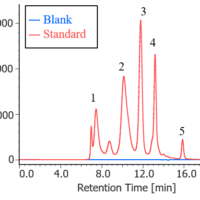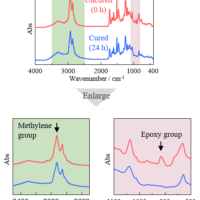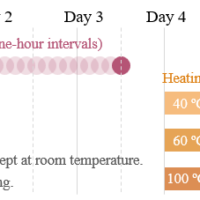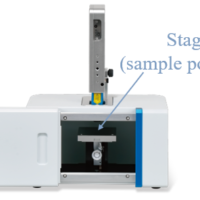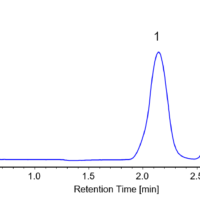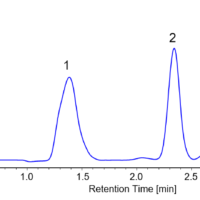Introduction
ATP(adenosine triphosphate) in fish meat is decomposed as time elapses following the route shown in Figure 1 (left), and its decomposition can be applied for the degree of freshness of fish meat as K value. K value is defined as shown in Figure 1 (right).

Figure 1. Definition of K value
It is known that fish meat can be used for eating in the raw (sashimi) if K value is less than 20% and can be used for cooking and processing if K value is 20 – 60%.
In this article, the degree of freshness of fish meat is measured by calculating K values using Ultra High-performance Liquid Chromatography (UHPLC). In addition, the time course of K values, i.e., degradation of the freshness, was measured.
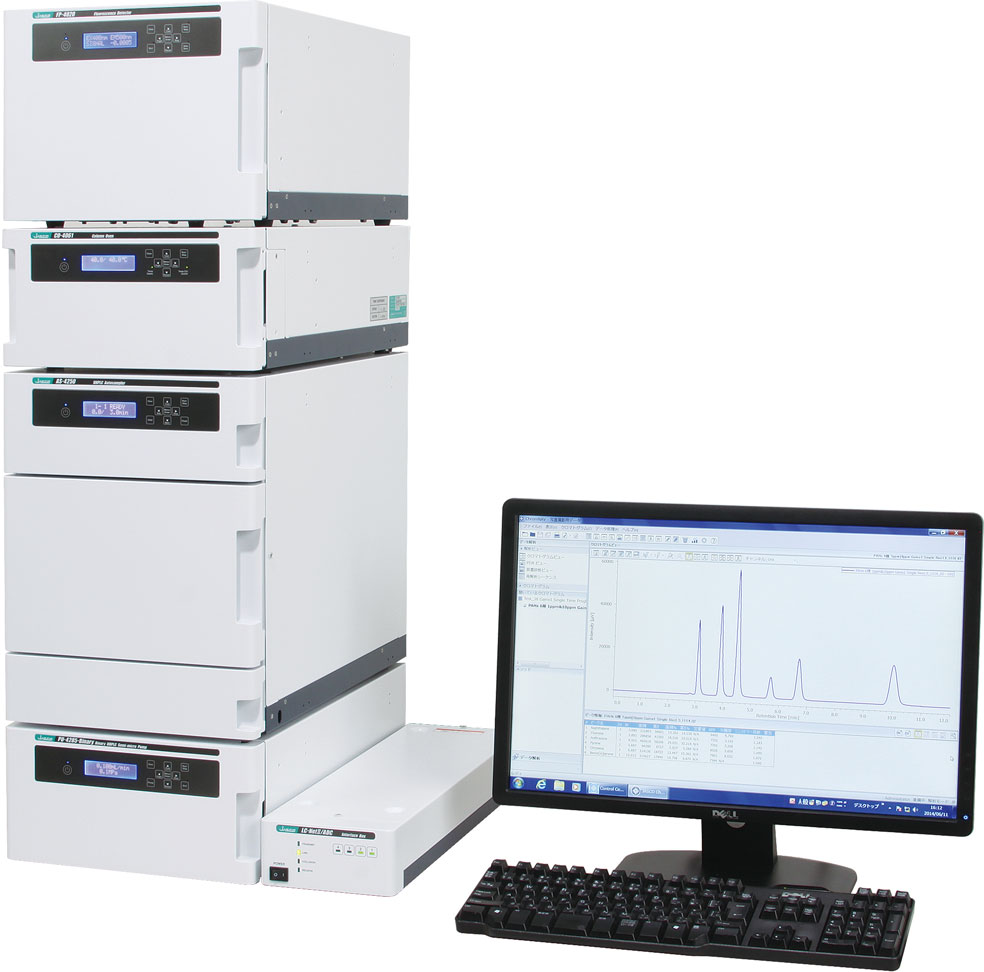
LC-4000 UHPLC system
Experimental
Chromatographic conditions
Column: X-PressPak AQ-C18-W (3.0 mmID x 50 mmL, 2.0 µm)
Eluent A: 100 mM Phosphate buffer (pH 4.2)
Eluent B: 100 mM Phosphate buffer (pH 4.2)/Acetonitrile (50/50)
Gradient condition (A/B): 0 min(100/0) -> 2.2 min(100/0) -> 6.0 min(50/50) -> 7.0 min(50/50) -> 7.05 min(100/0) 1 cycle; 10 min
Flow rate: 0.6 mL/min
Column temp.: 30ºC
Wavelength: 260 nm
Injection volume: 1 µL
Standard sample: ATP and degradation products 1.0 µg/mL each
Keywords
UHPLC,ATP, ADP, AMP, IMP, Ino, Hypo, 2.0 µm, C18 column, UV-Vis detector
Results
Figure 2 shows chromatogram of adenosine nucleotides. Analysis time was shortened approximately 1/8 times as compared with conventional HPLC without sacrificing the resolution of each component.
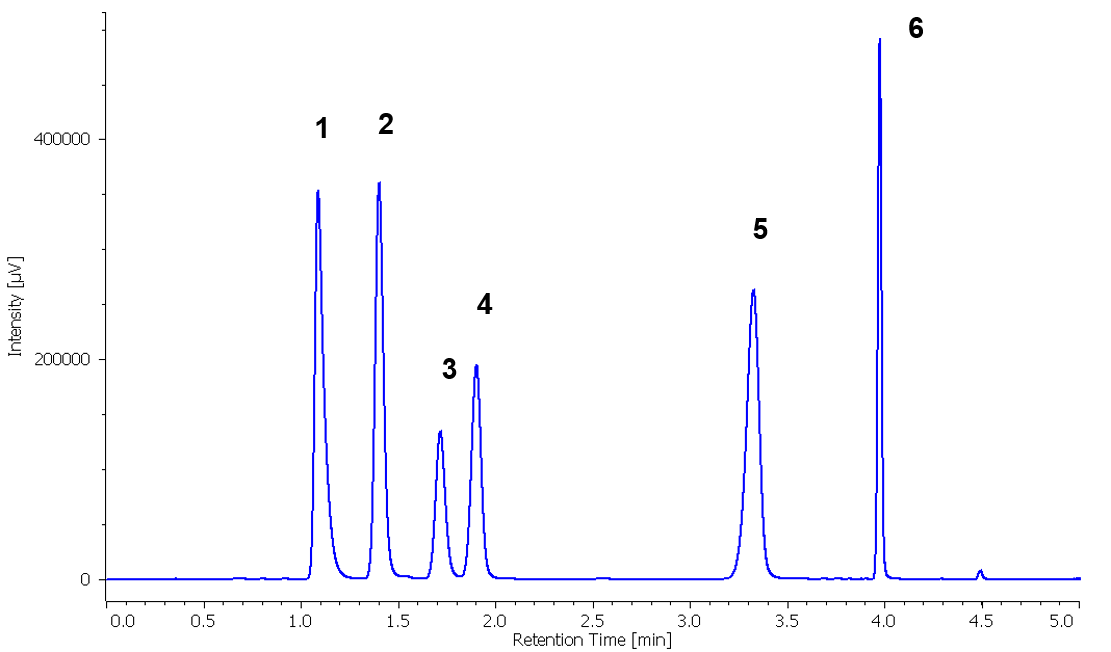
Figure 2. Chromatogram of standard mixture of adenosine nucleotides (1: ATP, 2: ADP, 3: IMP, 4: Hypo, 5: AMP, 6: Ino)
Figure 3 shows a chromatogram of adenosine nucleotides in sashimi grade tuna fish meat two days after purchase. Target six components are detected without any interference by contaminants. This sample’s K value was 8 %.
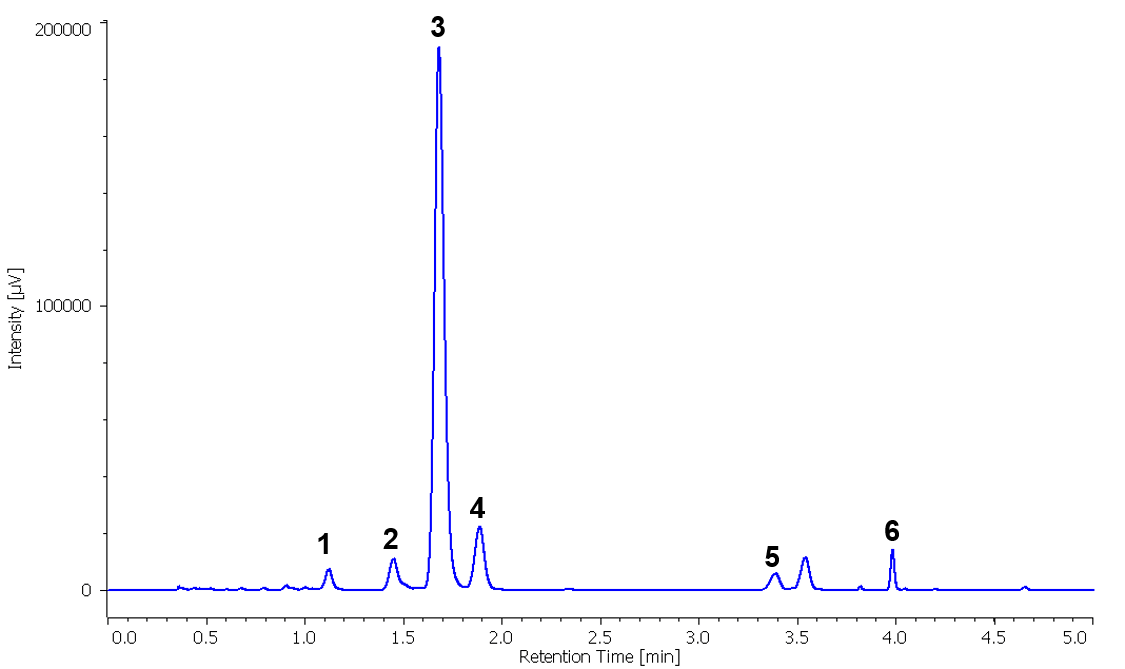
Figure 3. Chromatogram of adenosine nucleotides in sashimi grade tuna fish meat (stored in a refrigerator at 4ºC for two days after purchase, 1: ATP, 2: ADP, 3: IMP, 4: Hypo, 5: AMP, 6: Ino)
Preparation. 0.4 M perchloric acid aqueous solution(20 mL) was added to tuna fish meat (2.5 g) and homogenized. Then 2 M potassium carbonate aqueous solution(1 mL) was added to the obtained supernatant (5 mL) and applied to centrifugal separation. Obtained supernatant was filtered with 0.2 µm membrane filter.
Figure 4 shows the time course of the degradation of tuna fish meat.

Figure 4. Time course of the degradation of tuna fish meat

